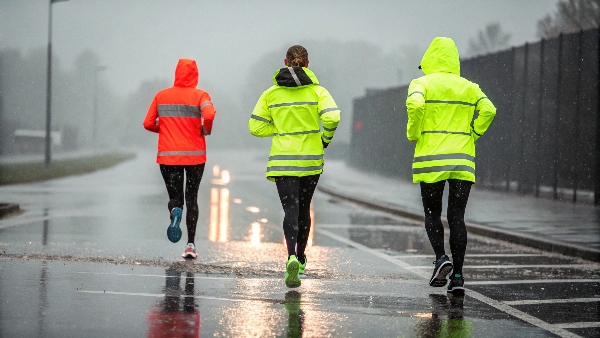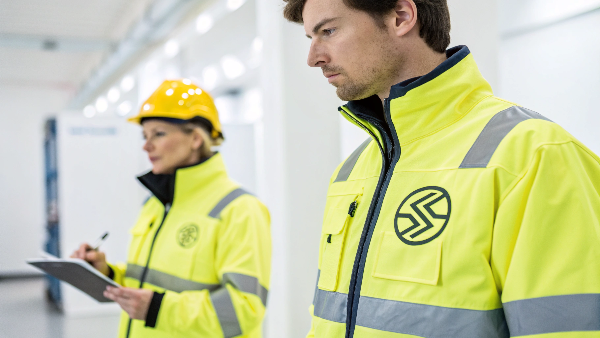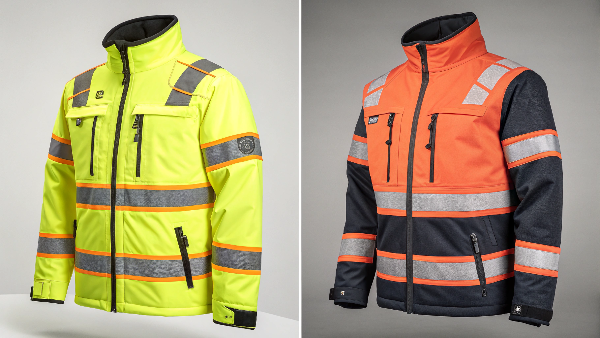Finding the right weighted vest can be confusing. You want results, not a costly mistake. This guide clarifies prices so you invest wisely.
A quality weighted vest typically ranges from \$50 to \$300. Prices depend on weight, materials, adjustability, and brand reputation. Investing in this range generally ensures durability, comfort, and effectiveness for your fitness goals, helping you get the best value.
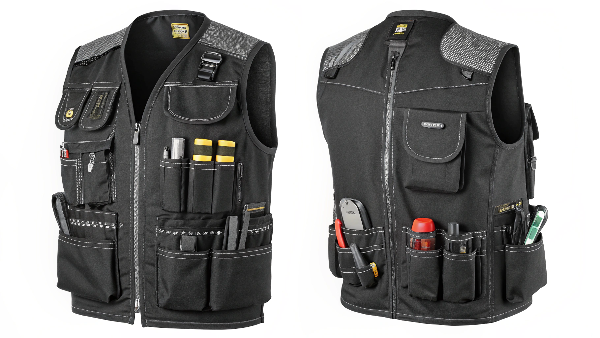
Now that you have a general idea of the cost, you might be asking what really makes one vest more expensive than another. Or, you might wonder how to pick the best one for your specific needs without overpaying. We are going to look into these questions. This will help you make a smart choice. Let's explore these details further.
How much should a weighted vest be?
Worried about overpaying for a weighted vest? You want good value, but what's a fair price? Let's break down what you should expect to spend.
A weighted vest1 should cost between \$50 for basic models and up to \$300 for premium, highly adjustable ones. Your budget should align with desired features, weight capacity, and material quality2 for long-term use.
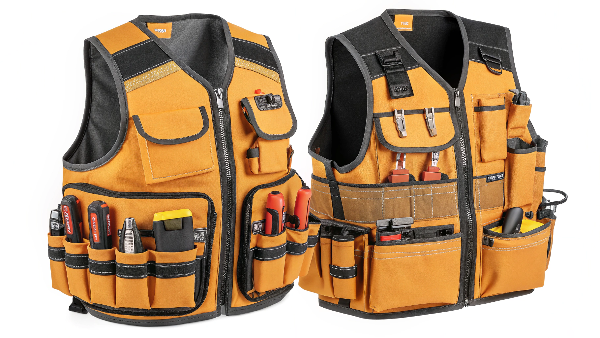
When I think about pricing for weighted vests, it reminds me of how we approach our safety wear at Vissafetywear. The cost of any product, be it a high-visibility jacket or a weighted vest, is closely tied to several key factors. You're not just paying for the weight itself; you're investing in design, materials, and durability.
Key Factors Influencing Weighted Vest Prices
Several things determine the final price tag:
- Weight Capacity and Included Weights: Vests that can hold more weight or come with a wide range of adjustable weights often cost more. The type of weight (sand, iron filings, steel blocks) also plays a part.
- Material Quality: Just like our Vissafety apparel that needs to withstand tough conditions and meet EN ISO 20471 standards, good weighted vests use durable fabrics like heavy-duty nylon or neoprene. These materials resist tearing, manage moisture, and offer comfort. Better materials mean a higher price but also a longer lifespan for the vest.
- Design and Comfort Features: An ergonomic design that distributes weight evenly, padded shoulders, and secure fastening systems add to the cost. A comfortable vest is one you’ll actually use.
- Brand Reputation and Warranty: Established brands often invest more in research, development, and quality control, similar to our R&D lab with 75+ testing devices at Vissafetywear. This can lead to a higher price, but it often comes with better customer support and warranties.
Here's a general idea of what you might expect at different price points:
| Price Tier | Typical Range | Expected Features | Best For |
|---|---|---|---|
| Budget | \$50 - \$100 | Fixed or limited adjustability, basic materials (e.g., nylon, sand-filled weights). | Beginners, light use, trying out weighted training. |
| Mid-Range | \$100 - \$200 | Good adjustability, more durable materials (e.g., neoprene), comfortable padding. | Regular users, varied workouts, good balance of features & price. |
| Premium | \$200 - \$300+ | Excellent adjustability, top-tier materials (e.g., Cordura), ergonomic fit, often plate-carrier style. | Serious athletes, heavy use, specific training needs. |
At Vissafetywear, our mission is to provide top-quality, stylish, and customizable High Visibility Clothing. We believe in value through quality. I advise you to think similarly about a weighted vest: a slightly higher upfront cost can mean better performance and durability, saving you money in the long run.
What is the best weighted vest to buy?
Choosing a weighted vest feels overwhelming. With so many options, how do you find the "best" one? You need a vest that truly fits your needs.
The best weighted vest depends on your specific fitness goals, body type, and budget. Look for adjustable weight options3, a comfortable and secure fit, and durable materials4 from a reputable brand.
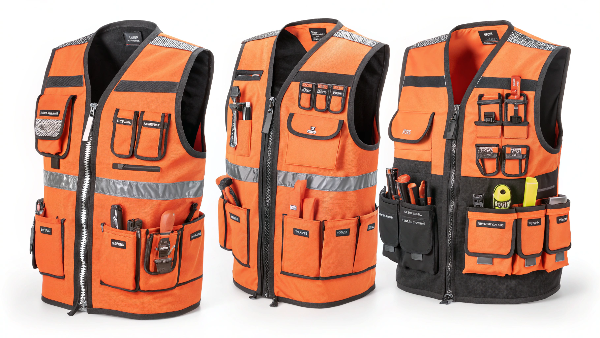
Finding the "best" weighted vest is a personal journey, much like how our clients at Vissafetywear choose specific safety garments tailored to their industry needs – be it construction, logistics, or oil & gas. There isn't a single "best" vest for everyone. The ideal vest for you will depend heavily on what you plan to use it for.
Key Considerations for Your Choice
To help you decide, I always suggest thinking about these points:
- Your Fitness Goals: Are you aiming to build strength, improve endurance for running, or add intensity to bodyweight exercises? For strength, a heavier, plate-compatible vest might be best. For agility or cardio, a slimmer, more flexible design could be better.
- Adjustability and Weight Range: A vest with removable weights offers versatility. You can start lighter and gradually increase the load as you get stronger. This is like how our clients might need different levels of visibility or protection depending on the job site.
- Comfort and Fit: This is crucial. A vest that chafes, bounces, or restricts movement will quickly be abandoned. Look for:
- Even Weight Distribution: Prevents strain on your shoulders and back.
- Secure Straps: Keeps the vest snug during vigorous exercise.
- Padding: Especially in the shoulder and chest areas.
- Breathable Material: Helps manage sweat.
- Material and Durability: You want a vest that lasts. Reinforced stitching, tough outer fabric (like nylon or Cordura), and quality closures (buckles, Velcro) are important. At Vissafetywear, we do triple inspections for our products; look for brands that emphasize quality construction.
Comparing Common Vest Types
| Vest Type | Pros | Cons | Best For |
|---|---|---|---|
| Fixed Weight Vests | Often more affordable, simple to use. | Not versatile as you can't change the weight. | Beginners on a budget, specific consistent-load exercises. |
| Adjustable Sandbag Vests | Conform well to the body, good for dynamic movements, often cheaper adjustable option. | Sand can shift, potential for leakage if low quality, bulkier. | CrossFit, functional fitness, some cardio. |
| Adjustable Block/Brick Vests | Slimmer profile, weights are secure. | Can be less comfortable, weight increments might be larger. | General fitness, adding moderate resistance. |
| Adjustable Plate Carrier Vests | Highly durable, can hold significant weight, secure fit for intense activity. | More expensive, can be bulky, plates often sold separately. | Serious strength training, tactical fitness, advanced users. |
My advice? Read reviews, and if possible, try a vest on. Just as our clients trust Vissafetywear for reliable, certified safety apparel, choose a weighted vest brand known for quality and customer satisfaction.
Why are weighted vests expensive?
Wondering why some weighted vests have high price tags? It seems like a simple item. Understanding the costs involved helps you see the value.
Weighted vests are expensive due to quality materials, R&D for ergonomic design, the cost of the weights themselves, durable construction techniques, and brand reputation ensuring reliability and safety.
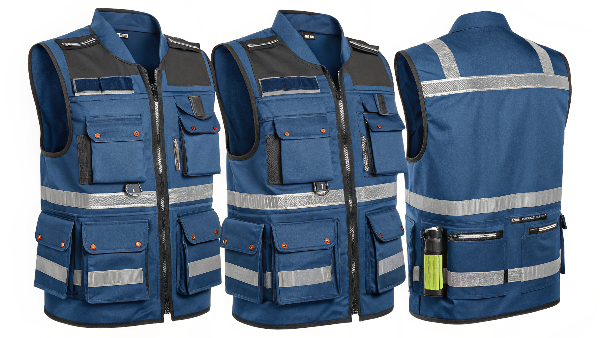
When I look at a well-made weighted vest, I see parallels with the high-visibility safety apparel we manufacture at Vissafetywear. The final price isn't arbitrary; it reflects a combination of factors that contribute to the product's quality, safety, and longevity. You're not just paying for fabric and some weights; you're investing in something designed to perform and last.
Breakdown of Costs
Let's break down what contributes to the expense of a good weighted vest:
- High-Quality Materials5:
- Fabric: Durable outer shells like Cordura, heavy-duty nylon, or neoprene are needed to withstand stress and prevent tearing. These cost more than basic fabrics. At Vissafetywear, we use specific materials to meet EN ISO 20471 for visibility and durability.
- Padding: Comfortable shoulder and body padding, often made from dense foam, adds to the cost but is essential for user comfort during workouts.
- Stitching and Fasteners: Reinforced stitching, strong Velcro, and robust buckles are critical for safety and durability, especially with heavier loads.
- The Weights Themselves:
- Material: Steel plates, cast iron ingots, or even dense metal sand are more expensive than simple filler. They offer better density and a more compact design.
- Manufacturing: Precisely shaped and sometimes coated weights add to production costs.
- Research, Design, and Development (R&D)6:
- Ergonomics: Creating a vest that distributes weight evenly, fits comfortably, and doesn't restrict movement requires careful design and testing. This is similar to how we invest in our industry-leading lab at Vissafetywear to ensure our garments are functional and compliant.
- Adjustability Mechanisms: Sophisticated systems for adding or removing weights securely add to complexity and cost.
- Manufacturing and Labor:
- Skilled labor is needed to assemble these vests, especially those with complex designs and reinforced structures. Our 20+ advanced production lines at Vissafetywear represent an investment in quality manufacturing.
- Brand, Quality Control, and Warranty7:
- Reputable brands invest in rigorous quality control (like our triple inspection process) to ensure each vest meets their standards.
- They also typically offer warranties and customer support, which are factored into the price.
Essentially, a more expensive weighted vest often means you're paying for better durability, a more comfortable and secure fit, and safer weight management. It's an investment in a piece of equipment that, if chosen well, will support your fitness journey for a long time.
Is a 40 pound weighted vest too much?
Thinking of a 40lb vest for a serious challenge? It's a big jump. You need to know if this weight is right or risky for you.
A 40-pound (approx 18kg) weighted vest can be too much for many, especially beginners or those with smaller frames. It's best suited for experienced individuals with a strong fitness base for specific strength exercises.
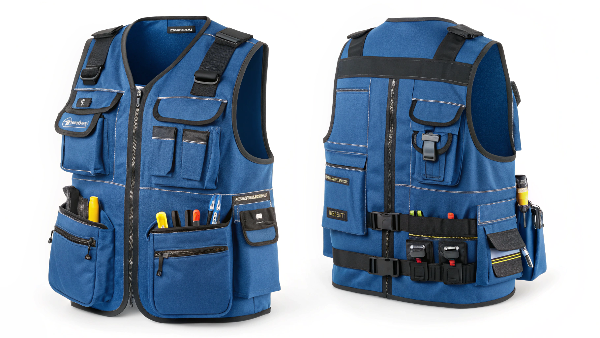
When considering a 40-pound weighted vest, it's crucial to be honest about your current fitness level and experience. In my years of manufacturing safety equipment at Vissafetywear, I've learned that "one size fits all" rarely applies, especially when significant stress or load is involved. The same is true for weighted vests. A 40lb vest represents a substantial added load.
Who is a 40lb Vest For?
A 40lb vest is generally suitable for:
- Strong, Experienced Individuals: People who have been training consistently and have built a solid foundation of strength.
- Larger Individuals: Body weight plays a role; 40lbs will be a smaller percentage of total load for a heavier person.
- Specific Strength Goals: Used for exercises like weighted pull-ups, push-ups, squats, or loaded carries where the aim is significant strength or hypertrophy.
When is a 40lb Vest Too Much?
It's likely too much if:
- You're a Beginner: Starting with such a heavy weight can lead to poor form, excessive strain, and a high risk of injury to joints, tendons, or your back.
- Your Form Suffers: If you cannot maintain proper technique for your chosen exercises with the vest on, the weight is too heavy.
- It Causes Pain: Discomfort is one thing, but sharp or persistent pain is a clear signal to reduce the weight.
- You Primarily Want It for Cardio: For running or extended cardio, 40lbs is generally excessive and can put undue stress on your joints.
General Guidelines for Choosing Weight
A common recommendation is to start with a vest that's 5-10% of your body weight. For a 150lb (68kg) person, this would be 7.5-15lbs (3.4-6.8kg). You can then gradually increase.
| User Profile | Body Weight Example | Recommended Starting Vest Weight | Progression | 40lb Vest Suitability |
|---|---|---|---|---|
| Beginner | 150 lbs / 68 kg | 7.5 - 15 lbs (3.4 - 6.8 kg) | Slow, focus on form, listen to body. | Generally not recommended. |
| Intermediate | 180 lbs / 82 kg | 18 - 27 lbs (8.2 - 12.2 kg) | Gradual increase as strength improves. | Potentially, for specific exercises, with caution. |
| Advanced/Strong | 200 lbs / 91 kg | 20 - 40 lbs (9.1 - 18 kg) | Can use heavier weights for strength work. | Yes, for targeted strength training. |
At Vissafetywear, we design products to meet global safety standards like ANSI/ISEA 107. Think of your body as having its own safety standards. Don't overload it beyond its capacity. It's better to progress slowly and safely than to risk injury. If you are unsure, consult with a fitness professional.
Is it OK to wear a weighted vest all day?
Can wearing a weighted vest all day boost your fitness? It sounds like an easy win. But continuous wear might have downsides you haven't considered.
Generally, it is not advisable to wear a weighted vest all day. Prolonged use can lead to excessive joint strain, muscle fatigue, poor posture, and discomfort, outweighing potential benefits.

The idea of passively increasing calorie burn or building strength by wearing a weighted vest throughout the day is tempting. However, from my perspective as a manufacturer focused on safety and proper equipment use at Vissafetywear, this approach raises some concerns. Our safety vests are designed for specific work durations, not 24/7 wear, and a similar principle applies to fitness tools like weighted vests.
Potential Downsides of All-Day Wear
Wearing a weighted vest for extended periods, especially if it's moderately heavy, can lead to several issues:
- Joint Strain: Your spine, hips, knees, and ankles are constantly bearing the extra load. Over many hours, this can lead to chronic pain, inflammation, or even contribute to degenerative joint issues.
- Muscle Fatigue and Imbalance: While some muscle engagement is good, constant activation without adequate rest can lead to chronic fatigue in postural muscles. It might also cause some muscle groups to overcompensate, leading to imbalances.
- Postural Problems: If the vest isn't perfectly fitted or if you naturally start to slouch under the weight over time, it could negatively impact your posture.
- Chafing and Skin Irritation: Even the most comfortable vest can cause friction and irritation if worn continuously against the skin or tight clothing.
- Decreased Body Awareness: Your body might adapt to the constant weight, potentially making you less aware of your natural movement patterns or leading to clumsiness when you take it off.
- False Sense of Security/Effort: You might feel like you're doing more than you are, potentially neglecting more focused, effective training sessions.
When Might Limited Extended Wear Be Considered?
There are very specific, often professionally guided, scenarios where someone might wear a light weighted vest for longer periods:
- Certain Therapeutic Interventions: Under the guidance of a physical or occupational therapist for specific conditions.
- Very Light Vests for N.E.A.T.: Some people use extremely light vests (e.g., 1-5 lbs) to slightly increase Non-Exercise Activity Thermogenesis (N.E.A.T.) during daily activities. However, the benefits versus risks still need careful consideration.
For most fitness purposes, a weighted vest is a tool for your workouts, not an all-day accessory. Use it strategically to enhance specific training sessions. Think of it like specialized safety equipment – essential for the task at hand, but not meant for continuous, indefinite use.
Is a 30 lb weight vest enough?
Considering a 30lb weighted vest? You wonder if it's heavy enough for real results. The answer depends on your goals and current fitness level.
Yes, a 30 lb (approx 13.6 kg) weighted vest is often enough to significantly increase workout intensity and drive progress in strength, endurance, and muscle growth for many individuals.

When I think about "enough," it reminds me of how we ensure our Vissafety high-visibility clothing meets specific EN ISO 20471 or ANSI/ISEA 107 standards. "Enough" visibility is crucial for safety. Similarly, "enough" weight in a vest depends entirely on your individual fitness level, your goals, and the exercises you're performing. For many people, a 30 lb (around 13.6 kg) vest is a very substantial and effective training tool.
How a 30lb Vest Can Be "Enough"
A 30lb vest can provide significant benefits:
- Increased Intensity for Bodyweight Exercises: Adding 30 lbs to exercises like push-ups, pull-ups, dips, squats, and lunges dramatically increases the challenge. This overload is key for building muscle and strength.
- Enhanced Cardiovascular Demand: Wearing a 30lb vest during walks, hikes, or stair climbing will elevate your heart rate more than without it, improving cardiovascular fitness and calorie burn.
- Building Core Strength and Stability: Your core muscles will work harder to stabilize your torso with the added weight, leading to a stronger, more resilient midsection.
- Breaking Plateaus: If you've hit a standstill in your bodyweight training, a 30lb vest can provide the new stimulus needed to continue making progress.
Factors Determining if 30lbs is Right for You
| Factor | Considerations for a 30lb Vest |
|---|---|
| Your Body Weight | For a lighter individual (e.g., 120 lbs), 30 lbs is 25% of their body weight – a very significant load. For a heavier person (e.g., 200 lbs), it's 15% – still challenging but relatively less. |
| Your Fitness Level | Beginners will likely find 30 lbs too much to start. Intermediate to advanced trainees are more likely to benefit from this weight. |
| Type of Exercise | For weighted pull-ups, 30 lbs might be a good challenge for someone already strong. For jogging, it might be too much joint stress for many. |
| Your Specific Goals | If your goal is extreme strength, you might eventually progress beyond 30 lbs. If it's general fitness and endurance, 30 lbs can remain challenging for a long time. |
I often tell my clients, like Danny Cheng who sources innovative products from Vissafetywear, that the right tool makes all the difference. A 30lb vest, used correctly, is a powerful tool. It's not about the absolute maximum weight you can lift, but about finding a weight that challenges you appropriately to stimulate growth and adaptation safely. For a wide range of people and exercises, 30 lbs is definitely "enough" to see significant results.
What are the negatives of weighted vests?
Weighted vests seem like a great tool. But are there downsides? Knowing the potential negatives helps you use them safely and effectively.
Negatives of weighted vests include risk of joint/back injury if too heavy or with poor form, chafing, restricted movement if ill-fitting, and the initial cost of a quality vest.
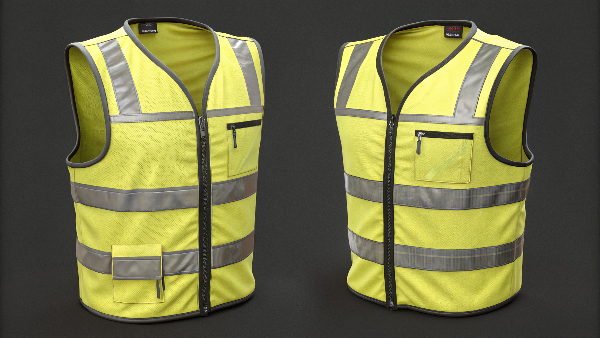
While weighted vests are excellent tools for enhancing fitness, like any piece of equipment, they aren't without potential drawbacks. At Vissafetywear, we always emphasize the correct use of safety apparel to avoid risks, and a similar mindset should apply to fitness gear. Understanding the negatives can help you use a weighted vest more effectively and safely.
Potential Disadvantages to Consider
- Risk of Injury: This is the most significant concern.
- Joint Strain: Adding extra weight, especially with high-impact activities or improper form, can put excessive stress on your knees, hips, ankles, and spine.
- Muscle/Tendon Injury: Using a vest that's too heavy too soon can lead to strains or tears.
- Exacerbating Pre-existing Conditions: Individuals with back problems, arthritis, or other musculoskeletal issues should be particularly cautious and consult a doctor.
- Poor Form: The added weight can make it difficult to maintain proper exercise technique, especially if you're fatigued or the weight is too challenging. Poor form is a direct path to injury.
- Discomfort and Chafing: An ill-fitting vest, or one made from abrasive materials, can rub and chafe your skin, especially during longer workouts or in hot weather. This is why good design and material choice, which we prioritize at Vissafetywear, are important.
- Cost: Quality weighted vests, particularly those with good adjustability and durable materials, can be a significant investment.
- Overuse Issues: Relying too much on a weighted vest for all types of training, or using it too frequently without adequate recovery, can lead to overtraining syndrome or repetitive stress injuries.
- Restricted Movement: Some bulkier vest designs might slightly limit your range of motion for certain exercises.
- Breathing Restriction: If a vest is too tight across the chest, it could potentially constrict breathing, although this is less common with well-designed vests.
Mitigating the Negatives
The good news is that most of these negatives can be managed or avoided:
- Start Light and Progress Gradually: Don't rush to use a heavy weight.
- Prioritize Form: If your form breaks down, reduce the weight or remove the vest.
- Choose a Well-Fitting, Quality Vest: Invest in a vest that's comfortable and secure.
- Listen to Your Body: Don't push through pain.
- Use It Strategically: Incorporate it into a balanced training program.
Just as our clients rely on Vissafetywear's certified products for dependable protection, you should approach weighted vest training with a focus on safety and correct application.
Is it worth buying a weighted vest?
Wondering if a weighted vest is a worthwhile buy? It's an investment. You need to know if the benefits truly justify the cost for your fitness.
Yes, buying a weighted vest is worth it if you want to significantly increase workout intensity, overcome plateaus in bodyweight exercises, and build functional strength and endurance effectively.
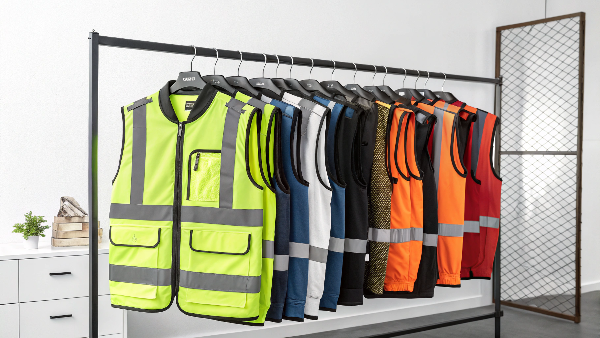
Deciding whether to invest in a weighted vest is a common question. From my experience in providing quality safety gear through Vissafetywear, I know that the "worth" of any specialized equipment depends on how well it meets a specific need and how effectively it's used. A weighted vest can be an incredibly valuable tool for many people, but its value is tied to your fitness goals and commitment.
When is a Weighted Vest a Good Investment?
I believe a weighted vest is worth buying if:
- You Want to Increase Workout Intensity: If standard bodyweight exercises like push-ups, squats, or lunges have become too easy, a vest adds a new level of challenge, stimulating further muscle growth and strength gains.
- You're Facing Training Plateaus: A vest can be the perfect tool to break through periods where your progress has stalled.
- You Aim for Functional Strength: Weighted vests help build strength that translates well to real-world activities by challenging your body in natural movement patterns.
- You Want to Enhance Cardiovascular Workouts: Adding weight to walks, hikes, or stair climbing significantly boosts calorie burn and cardiovascular effort.
- You Value Versatility: A single vest can be used for a wide range of exercises, making it a versatile addition to a home gym or workout routine.
- You're Committed to Using It: Like any fitness equipment, it's only worth it if you use it consistently and correctly. Our clients, like Danny Cheng who has collaborated with us for 12 years, value reliability and results – you should expect the same from your fitness gear.
Potential Return on Investment (ROI)
| Benefit Category | How a Weighted Vest Delivers |
|---|---|
| Strength Gains | Provides progressive overload for calisthenics and bodyweight movements. |
| Endurance | Increases the demand on your cardiovascular system and muscular endurance. |
| Bone Density | Weight-bearing exercise, amplified by a vest, can help improve bone density. |
| Efficiency | Makes workouts more challenging in less time. |
| Cost-Effectiveness | Compared to a full gym membership or multiple pieces of equipment, a quality vest can be a good long-term value. |
Think of it this way: businesses invest in our Vissafetywear customizable, compliant apparel because it offers protection, enhances their brand, and is reliable. A good weighted vest is an investment in your physical capabilities. If you're serious about taking your fitness to the next level and understand how to use it safely, then yes, it's often very much worth buying.
Are weighted vests good for seniors?
Can weighted vests benefit seniors? Safety is key. You need to know if this tool is helpful or harmful for older adults.
Weighted vests can be good for seniors if used cautiously, with very light weights, and under medical guidance to help improve bone density, muscle mass, and balance.
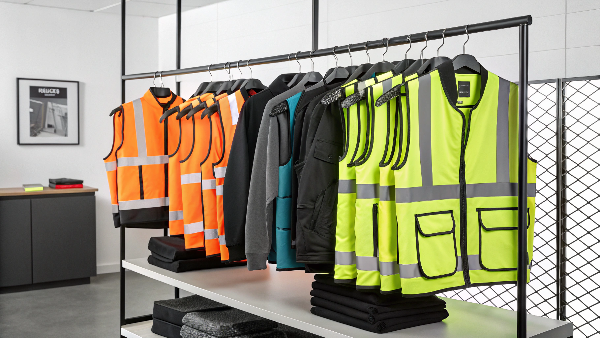
When we talk about seniors and exercise equipment, safety becomes the absolute top priority. At Vissafetywear, our mission is to protect people with quality gear, and this principle strongly applies here. Weighted vests can offer benefits for seniors, but they must be approached with extreme caution and ideally under the guidance of a healthcare professional or a qualified fitness expert specializing in geriatric exercise.
Potential Benefits for Seniors (Used Correctly)
With appropriate use, very light weighted vests might help seniors by:
- Combating Sarcopenia (Age-Related Muscle Loss): Adding even a small amount of resistance can help stimulate muscle maintenance and growth.
- Improving Bone Density: Weight-bearing exercise is crucial for bone health. A light vest can increase the load gently.
- Enhancing Balance and Stability: Stronger core and leg muscles, which can be aided by light resistance, contribute to better balance and may reduce fall risk.
- Increasing Calorie Expenditure: A light vest can slightly increase the energy cost of daily activities or gentle exercise.
Critical Precautions and Considerations
However, the risks can easily outweigh the benefits if not managed carefully:
- MUST Consult a Doctor: Before a senior considers using a weighted vest, a thorough medical check-up and doctor's approval are essential.
- Start Extremely Light: We're talking 1-2 pounds (0.5 to 1 kg), or even less, to begin with. The goal is gentle stimulus, not strain.
- Focus on Form and Safety: Proper movement patterns are critical to prevent injury.
- Comfort and Fit: The vest must fit well, not restrict movement or breathing, and not cause chafing.
- Choose Appropriate Exercises: Gentle walking, sit-to-stands, or specific therapeutic exercises prescribed by a professional are more suitable than intense workouts.
- Listen to the Body: Any pain or discomfort means stopping immediately.
- Pre-existing Conditions: Arthritis, osteoporosis (severe), heart conditions, or balance issues might make weighted vests unsuitable.
Comparison: Safety Gear and Senior Fitness Tools
| Aspect | Vissafetywear Safety Apparel | Weighted Vests for Seniors |
|---|---|---|
| Primary Goal | Protect worker from external hazards (visibility, etc.) | Gentle stimulus for muscle/bone health, improved function. |
| Risk Level | Designed to minimize risk in hazardous environments. | Potential for injury if misused (falls, joint strain). |
| Guidance | Standards like EN ISO 20471 dictate use. | Medical and professional fitness guidance is paramount. |
Just as we wouldn't recommend inappropriate safety gear for a specific job, a weighted vest isn't a universal tool for seniors. It has a niche, potentially beneficial role for some, but only with careful, informed, and supervised application. The focus should always be on enhancing quality of life safely.
Conclusion
Quality weighted vest prices vary. Choose wisely for your fitness goals. Like our Vissafety mission, good gear protects and empowers you.
-
Explore this link to understand the pricing trends and features of weighted vests, ensuring you make an informed purchase. ↩
-
Discover how different materials impact the durability and comfort of weighted vests, helping you choose wisely. ↩
-
Learn about the advantages of adjustable weight options in weighted vests to enhance your workout flexibility and effectiveness. ↩
-
Find out which materials ensure durability in weighted vests, helping you make a long-lasting investment for your fitness journey. ↩
-
Explore how high-quality materials enhance the durability and performance of weighted vests, ensuring a better workout experience. ↩
-
Learn about the critical role of R&D in creating ergonomic and effective weighted vests that improve user comfort and safety. ↩
-
Discover how brand reputation and quality control contribute to the overall value and reliability of weighted vests, ensuring a wise investment. ↩

